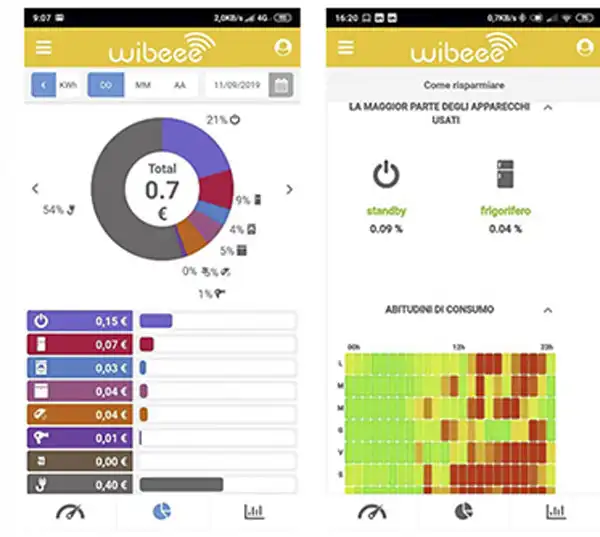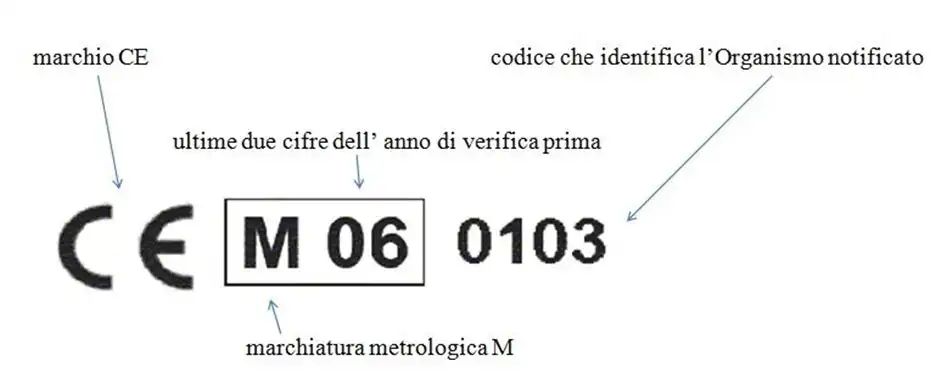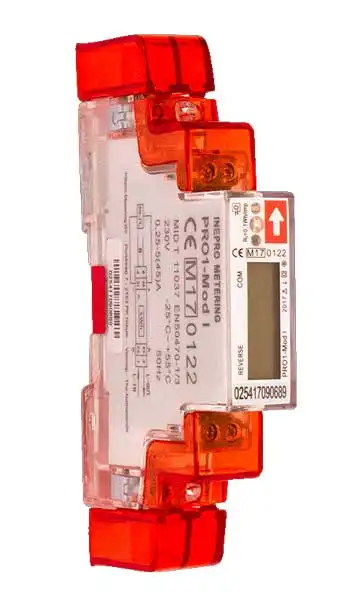Energy consumption measurements for single-phase installations - domestic
The growing focus on environmental protection has put all non-virtuous behavior by large manufacturing and mining companies that consume large amounts of energy under the magnifying glass.
Every transformation from raw material to final product leaves a trace in our delicate environmental balance so much so that agreements are being sought worldwide to limit the use of polluting energy resources as much as possible.
In this virtuous journey, we started with large companies and went all the way down to analyze the behavior of individual households. A long but indispensable path to be able to optimize our consumption of primary goods:
• WATER
• ELECTRICITY
• GAS
In general, knowledge and awareness of one’s consumption already allows an initial savings of 7-10%. In our homes, we have installed LED lights instead of incandescent lights, replaced appliances with class A or A++ appliances, installed solar panels to produce hot water or photovoltaic panels to produce the energy we consume. Conversely, connected devices have increased, so inevitably the risk becomes one of overconsumption.
The starting point of any evaluation is to have objective data on which to rely. The data collected from the home meter is not always available let alone detailed, we can at most figure out consumption by F1 – F2 – F3 time slots.
Technology is helping us, measuring electrical parameters has become much easier, measuring instruments (let’s call them ENERGY COUNTERS or ENERGY METERS) can be connected via WiFi on dedicated APPs, so we can better understand how and when we consume to try to improve our behaviors with the goal of reducing our unnecessary consumption and receiving lower bills.
For this kind of need, one turns to companies that specialize in energy monitoring, offering ready-to-use turnkey solutions, which however have a more Industrial target because that is where there is a greater chance of savings, or turn to one’s electrician of choice to have a MONO-PHASE or THREE-PHASE ENERGY METER installed in one’s electrical panel.
Let’s take a closer look at these instruments, there are several types, in order to collect data it is necessary for them to have some way of communication, the most common are:
Seriale RS485 MODBUS RTU;
MBUS serial (typical of Thermal Energy meters);
WiFi (in support of an existing Internet network);
LoRa/LoRaWAN that take advantage of 868MHz radio communication.
The purpose is to collect information and send it to a local collection device (DATALOGGER) that stores it and sends it to a CLOUD platform that processes the data and makes it accessible to users.
Measurement then is only the first, fundamental step in beginning to understand our energy profile. Having the data, as detailed as possible, allows us to understand the distribution of our consumption over the course of the day, the peaks of consumption, up to and including determining the amount of energy we consume with all the connected equipment in the house even if it is not running (STAND BY).
STAND BY results to date as one of the main items of consumption in a household. For years already, several European universities have been studying systems for automatic detection and recognition of household appliances by evolved energy meters, we have finally been able to lower ourselves from an absolute figure given by bill to a disaggregated figure by appliance. So what are the heaviest “items” in our bill?
STAND BY.
REFRIGERATOR/FREEZER (is always in operation H24) .
DISHWASHER.
WASHING MACHINE.
HEAT PUMP/AIR CONDITIONER.
Of course, the positions may change depending on the frequency and duration of use, but from here there is no escape…
But how is it possible to go that far? The secret lies in the ability on the part of the latest generation of microprocessors to be able to sample electrical measurements at a very high frequency, this allows the measurement instrument to be able to discriminate and recognize the energy footprint of each household appliance.
We can then access a huge amount of data collected even in our homes, we can be able to assess the energy impact of our every action and habit, we can be aware of our consumption even before we receive the bill.

One of the first companies to develop such instrumentation was WIBEEE, a brand of SMILICS TECHNOLOGIES SL of Terassa, Barcelona.
They thought about our homes and the lack of space inside electrical panels, so they developed an energy meter that hooks directly onto the circuit breaker in the home, equipped with WiFi communication.
Through an APP we can connect to the meter to see the data recorded on the WIBEEE CLOUD with the values of Active Energy consumed overall and disaggregated by appliance.
By associating the cost per kWh we already have idea of daily costs, monthly reports on the distribution of consumption. Through a second device installed on the circuit breaker of the home PV system, both the energy consumed and the energy produced can be displayed on the same graph, thus having a complete monitoring system on the same platform/APP.
The topic is very current, already some utilities that offer contracts for the supply of Electricity propose metering solutions, more or less evolved than this, both to make customers aware of the “Green” and to try to retain them by tying them with the installment purchase of the equipment.
The recent opening to the CER Renewable Energy Communities, so the possibility of creating Self-Generating Energy Communities that can be sold to their members or sold to the neighborhood (summarizing in an extreme way), emphasized the need for CERTAIN accounting of how much ENERGY was PRODUCED and how much ENERGY was CONSUMED by the customer. To support this need, there are already instruments, more traditional ones, that allow active energy, consumed and produced, to be measured in a CERTIFIED manner-these are the instruments that bear the MID mark.
MID means Measurement Instruments Directive. This directive was approved by the European Union in 2004 and involves not only Energy measuring instruments, even water or gase flow meters for example. They can be recognized by special branding:


These types of meters transmit data through an RS485 serial communication port with an open protocol MODBUS RTU (a standard used at the home automation and industrial level), the data is collected as we saw earlier, using some DATALOGGER, and posted on CLOUD platforms For processing and analysis of the case.
MID-certified tools are widely used by companies offering monitoring services or by ESCOs (Energy Service Companies) in their projects.
Beyond the more virtuous aspect of monitoring energy consumption, there is another, less noble, but strongly incentivizing one. These are the incentives called TEEs (Energy Efficiency Certificates) or White Certificates, which can be applied for from the ENERGY SERVICES MANAGER (GSE) following an efficiency project where it can be demonstrated that as a result of structural interventions, consumption has been decreased for the same use. For example, if you replace an old engine with a new one, for the same number of hours of use, the fuel consumption will be significantly lower.
